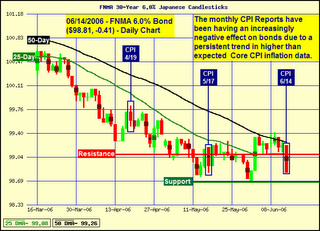Are we headed for a soft landing? The media has been beating the ‘real estate bubble’ drum for several years, and in doing so scaring countless would-be homeowners out of buying what would have been a nice investment, not to mention a nice place to call home. But now we are seeing a counter-weight of similar magnitude, in real estate professionals and industry insiders who clamor for the so-called “soft landing” in the housing market.
Stepping back a bit and looking at housing from an economic perspective we might be able to take some of the hot air out of the equation and see what is really happening. Housing is an investment, and an asset in a class of its own based on the function it serves relative to other types of investments. But real estate is still subject to market conditions, cycles, and other typical financial rhythms.
There is no question that housing has seen tremendous gains in recent years, exhibiting characteristics of ‘irrational exuberance’ that have paved the way to inflated asset prices and preceded significant corrections in value. The most recent memorable example was the NASDAQ and dotcom stock rally that came to an end in 2000. From the peak of the rally to the trough of the correction, the index lost a staggering 71%
Commentary on the asset bubble phenomenon most commonly references a mania in the market for Dutch tulip bulbs during the 1630’s, where at the height of the market, people were swapping homes for flower bulbs.
In Extraordinary Popular Delusions and the Madness of Crowds, Charles Mackay wrote “that whole communities suddenly fix their minds upon one object, and go mad in its pursuit.” Is this what we have seen in the US housing market in recent years?
The characteristics of a cycle turning over are present in the housing market. First we saw a parabolic curve in home values. The Federal Reserve stepped in to raise rates (while the general goal was to curb inflation, it is very likely that the specific goal was to temper home values), and eventually inventory increased. Now prices are starting to come down.
Paul Kasriel of Northern Trust recently published that in the current housing rally, the dollar volume of all sales was at a record high when represented as a percentage of GDP. The implication is that this is an extreme market, and that we should be facing a similarly extreme correction.
Given that the housing market continued to rally in the face of the Fed rate hikes, demand was defined as ‘inelastic’. In other words, people did not care that it was becoming more expensive to buy; they just used more liberal loan products, taking on increased risk, and kept on spending. It took 17 hikes of 0.25% each before the market showed a change in mood.
Several economists think that the Fed tightened rates well beyond the neutral point, and expect them to start lowering as soon as January 2007. Cool the jets with higher rates, then slowly ease back into the comfort zone. Its like getting into a car that has been parked in the sun: put the AC on full blast for 10 minutes, and you’ll eventually need to back off and find the middle ground.
Paul McCully at PIMCO recently made the case that all of this suggests that a ‘soft landing’ in housing is nothing but a pipe dream. Demand for housing, he says, is inelastic on the way down, just as it is on the way up. Once the investors change sentiment, rate cuts are not going to bring them back in droves. We saw this with the NASDAQ, and stock market in general. It took an over-correction and under-valued securities to bring the interest back to Wall Street.
So is housing due for an over-correction? Is the ‘soft landing’ attainable? Kasriel and McCully make for an interesting case. Next we will look at the Kubler-Ross model laid down over the US housing market, and see if we can find any similarities.


